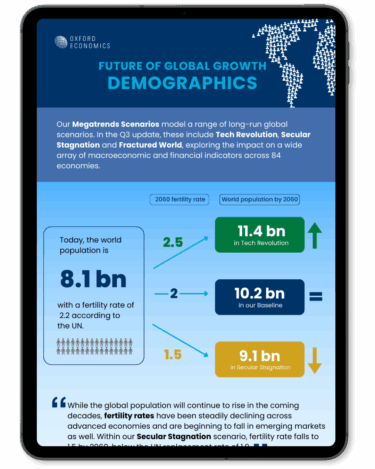The economic impact of the sports activities of public service media
Commissioned by the
European Broadcasting Union

Commissioned by the European Broadcasting Union, this unique study assesses the economic impact of public service media (PSM) sports coverage in 2022, across the EU-27, Norway, Switzerland, Türkiye, and the UK. The total GDP contribution was €4.9 billion, comprising a direct impact of €0.9 billion, an indirect (supply chain) impact of €2.7 billion, and an induced (wage-funded expenditure) impact of €1.4 billion. This was associated with 62,200 jobs—5,200 direct, 38,600 indirect, and 16,400 induced. The GDP multiplier was therefore relatively high at 5.7, and the jobs multiplier even higher at 11.6. This reflects the high value of payments to third party suppliers, relative to the organisations’ own staffing and capital costs.
The report also showcases the wider economic benefits of public service media’s sports coverage, with six types of impact identified, namely the way in which:
- Free-to-air media coverage leverages sponsorship and advertising revenue for the sports—often making PSM coverage a better commercial proposition than a pay TV alternative.
- The coverage can help grow the fan base, increasing merchandising income and gate receipts, and, exceptionally, allowing the sport to go on to experiment with pay TV options.
- Innovations by these organisations can improve cost-effectiveness and/or the consumer experience, with other media benefitting in due course as the knowledge spreads.
- Local economies can benefit from hosting PSM-covered sporting events, as free-to-air coverage encourages future tourism by highlighting the locality’s attractions to international audiences.
- The net benefit to consumers is enhanced by the fact that PSM sports coverage is free-to-air, with this and other benefits (such as national unity) recognised by “listed events” legislation.
- Increased grassroots participation in sports results in health benefits, aiding the economy in turn by reducing healthcare and social care costs, and enhancing labour productivity.
The experts behind the research
Our Economic Consulting team are world leaders in quantitative economic analysis, working with clients around the globe and across sectors to build models, forecast markets and evaluate interventions using state-of-the art techniques. Lead consultants on this project were:

Rosie Nolan
Senior Economist

Stephan Foreman
Associate Director

Doug Godden
Lead Economist
Tags:
Recent related reports

Future of Global Growth: Demographics
Our Megatrends Scenarios model a range of long-run global scenarios. In the Q3 update, these include Tech Revolution, Secular Stagnation and Fractured World, exploring the impact on a wide array of macroeconomic and financial indicators across 84 economies.
Find Out More
Roadblocks to China’s chip self-sufficiency dream
China is unlikely to achieve full chip self-sufficiency any time soon because of high technological hurdles in producing advanced manufacturing equipment and materials. The self-sufficiency target now stretches well beyond actual fabrication to include the entire chip supply chain as China struggles to acquire necessary input and machinery into the production process.
Find Out More
Why invest in AI ethics and governance?
In collaboration with the Notre Dame-IBM Technology Ethics Lab, Oxford Economics conducted 15 interviews with senior executives in 2024 to better understand how organizations are evaluating the ROI of AI ethics investments.
Find Out More
Global P&C Insurance Outlook to 2050
Capgemini leveraged custom macro and insurance market forecasts from Oxford Economics for their latest P&C insurance flagship report.
Find Out More